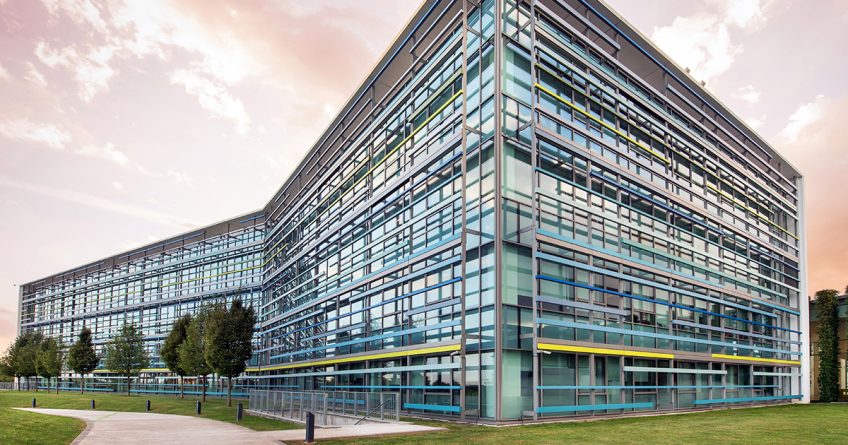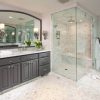Glass has become an important part of modern architecture, creating spaces that are not only functional but also beautiful. It serves as a canvas for architectural expression, connecting indoor environments with the outside world while providing important functions such as insulation, security, and natural lighting. In commercial settings, the application of glass is vital as it defines spaces, forms impressions, and often stands as a testament to a company’s image and ethos.
In this article, we explore the role of commercial glass, obtained through a commercial glass company, in modern architecture. Designed for students, professionals, and glass enthusiasts, this piece aims to clarify the types and uses of glass in commercial environments. We’ll cover how glass not only influences the aesthetic appeal of buildings but also contributes to their functional requirements such as light, insulation, and safety. Join us as we explore the properties and applications of different glasses, offering insights to make informed decisions for your architectural projects.
Table of Contents
Glass Essentials: Definitions and Roles
Glass, an incredibly versatile substance, is produced from a blend of sand, soda ash, and limestone that is subjected to elevated temperatures. Its most widespread commercial uses include impressive store facades to functional office dividers. Owing to its inherent characteristics, such as its fragility, firmness, and resistance to chemical deterioration, glass stands out as an ideal material for protecting building interiors from environmental factors while enabling the penetration of daylight. It is not just about utility; the clean and transparent aspect of glass contributes a touch of elegance and refinement to any construction exterior.
What’s more, with a variety of treatments and coverings, glass can provide better insulation, UV safeguards, and increased confidentiality, seamlessly merging usability with visual charm to satisfy the requirements of commercial deployment.
Varieties and Enhancements of Commercial Glazing
Commercial glazing employs a selection of glass types to meet diverse architectural demands, and these selections are often augmented with specific treatments and coatings to enhance their functionality. Widely adopted glass types encompass float glass, which is basic and adaptable, and low-emissivity glass, which is finished with a coating that reflects thermal energy, contributing to the regulation of temperature within structures. For commercial fronts or structures aiming for visual appeal, options like tinted or reflective glass are chosen.
Safety stands as a top priority in commercial construction, prompting the use of toughened and laminated glass alternatives. Toughened glass undergoes heat treatment to increase its strength compared to conventional glass and fractures into small, blunt-edged fragments upon impact. Laminated glass is designed with an interlayer that binds the shards of glass when it breaks, inhibiting the fragments from dispersing. These glazing solutions offer more than toughness; they also bring benefits such as noise dampening and ultraviolet filtration.
Energy Efficiency and Glass: Keeping the Costs Down
When we think about energy efficiency in our buildings, glass plays a key role in managing consumption and keeping costs down. This material isn’t just there to offer a view or natural light; it’s an important component in a building’s thermal performance. Advancements in glazing technology have led to the development of energy-efficient glass, which serves to minimize the amount of heat that escapes in the winter and retains a cool interior during summer. Examples include double and triple glazing, where multiple glass panes trap layers of air or gas, greatly reducing heat transfer.
What’s more, low-emissivity coatings can be applied to glass, reflecting infrared energy while allowing light to pass through, further boosting energy efficiency. A key metric in this is the U-value, which measures how well a window prevents non-solar heat loss or gain — the lower the U-value, the better the insulation properties of the glass. Selecting glass with the right U-value is imperative for commercial buildings looking to reduce energy costs and optimize comfort for the occupants.
Acoustic and Privacy Control with Glass
When it comes to creating a comfortable environment in commercial spaces, both acoustics and privacy are key factors. The type of glass used in the construction of these spaces can greatly impact the level of sound transmission. Standard glass panes are not particularly effective at blocking sound waves, but specialized acoustic glass, designed with multiple layers and varying thicknesses, can dampen noise and keep conversations confidential.
What’s more, privacy in a commercial setting doesn’t have to come at the expense of natural light. Options such as frosted, tinted, or smart glass, which transitions from transparent to opaque at the flip of a switch, offer an ideal solution for boardrooms and offices seeking seclusion without sacrificing aesthetics. Additionally, the application of films and interlayers to existing glass can both enhance its privacy features and improve its ability to reduce unwanted noise.
Design and Aesthetic Choices in Commercial Glazing
When we consider the role of glass in architecture, its impact on building design cannot be overstated. Glass has transformed from just windows and doors to become a defining feature of modern commercial structures. This change is partly due to groundbreaking innovations in glass technology which have expanded its capabilities, allowing for customization in color, texture, transparency, and even insulation properties. These advancements offer architects and designers a vast palette to work with, ensuring that each building can have a unique aesthetic.
However, in making commercial glazing choices, it is not only about the visual appeal. There is a delicate interplay between aesthetics and functionality. Glazing should meet specific performance standards — providing adequate insulation, soundproofing, and safety — while complementing the building’s overall design. As glass continues to push the boundaries of what’s possible in commercial spaces, the importance of striking the right balance between function and style becomes increasingly significant. This balance ensures that commercial buildings are not only visually captivating but also serve the needs of those who use them daily.
In conclusion, understanding the subtle differences between glass types is key for anyone involved in the field of commercial glazing. This article has clarified the complexity—highlighting that the right glass selection can significantly affect not only aesthetics but also functionality and efficiency. Now equipped with this knowledge, you’re in a position to make informed choices, ensuring that your commercial projects benefit from the most appropriate glass applications.
I believe in the power of words and I think God has blessed me with the same. I have a strong experience in the area of writing and love to share my work with the readers. Happy reading!!







